Smoother Walls
Spraying primer/surfacer can be faster and less expensive that skim coating drywall when you want a perfect paint job.
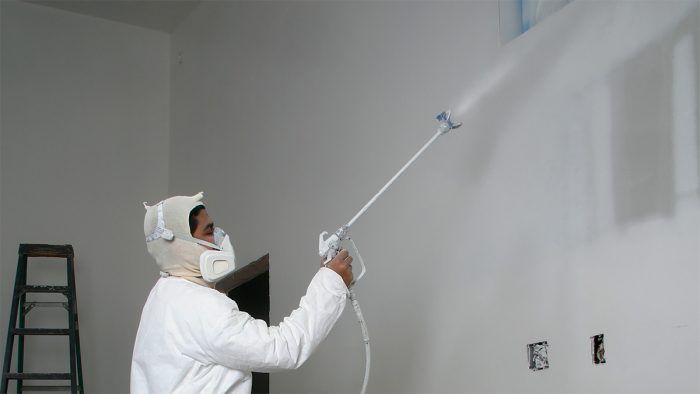
Synopsis: Joints and screw heads often show up even under three coats of joint compound because drywall’s paper face and the compound have different porosities and so reflect light differently. Rather than skim coating the walls, a faster and less expensive solution is to use a drywall primer/surfacer. Pro painter Philip Hansell thoroughly explains the two types of primer/surfacers and outlines their respective pros and cons. He also describes how to get the best results from these products.
Most new drywall has three coats of joint compound on corners and seams, but much of the drywall’s paper face is left uncoated. This is a Level 4 finish as specified by the National Gypsum Association. Even though the walls and ceilings look and feel smooth to the touch, the drywall’s paper surface and joint compound have different porosities. This means that when the wall is painted, the seams look darker and have a slightly glossier finish. The condition is worse when there’s raking light and when walls are painted with dark or glossy paints. Known as joint telegraphing, it’s a problem I’ve seen a lot in the 20 years I’ve been a painter. One common way to prevent telegraphing is to go the extra step to what the National Gypsum Association calls a Level 5 finish, which has traditionally been done by skim coating the entire drywall surface with compound. However, by using a modern drywall primer/surfacer, a crew of three or four painters can prep and spray the walls and ceilings of an entire average-size house to a Level 5 finish in one day for less cost.
Choose the right product
You may have learned that PVA primer is the right primer for new drywall. Primer/surfacers are similar and include the same vinyl acrylic base that seals the drywall paper and compound. But primer/surfacers cover better because they have a greater percentage of solid particles than PVA primer. These solids create a uniform surface that reflects light evenly. There are two basic types of primer/surfacers: standard and high-build. The difference is in how thick they go on.
For less-demanding applications, such as under flat or nearly flat paint and on surfaces that won’t get raking light, I use standard products that apply in a coat of about 4 or 5 mils. These primer/surfacers have fewer solids (more than 40% by weight) than high-build products but still more than a run-of-the-mill PVA primer, which can contain as little as 30% solids by weight. My favorites in this class include PPG Speedhide Interior Max Prime and Sherwin-Williams Builders Solution Interior Primer/Surfacer. These products won’t produce a Level 5 finish, but they do a good job when applied over Level 4 finished drywall, and they can prevent joint telegraphing in many cases. Besides being less expensive than high-build versions (6¢ per sq. ft. vs. 13¢ per sq. ft.), these less-viscous primer/surfacers can be sprayed with less-powerful sprayers because they require a smaller tip (0.015 in. dia. to 0.021 in. dia.). Sprayers this size are lighter and less expensive than the spray rigs needed for high-build primer/surfacers, which require larger tips (0.023 in. dia. to 0.031 in. dia.). you also can roll on standard primer/surfacers with a 3⁄8-in. to 3⁄4-in. nap roller, but rollers only make sense for small jobs because spraying is much faster.
High-build primer/surfacers can contain 66% solids by weight, and they go on thick, around 20 or 25 mils wet, which is equivalent to four or five coats of regular paint. These products can fill sanding scratches, smooth drywall fuzz, and hide other small surface imperfections. For high-build primer/surfacers, I like PPG Speedhide MaxBuild and Sherwin-Williams High Build Interior Latex Primer. When applied over Level 4 drywall, these high-build products provide a Level 5 finish, which I prefer under dark or glossy paint and in harsh lighting conditions.
Clean and mask
My crew sprays primer/surfacers when the drywall is finished and before the interior trim is installed. We start by wiping down the drywall with a commercial dust mop and then vacuuming the floor. If the finished flooring is in place, we mask and tape the floor. We mask HVAC openings, and we stuff all the electrical boxes and can lights with masking paper. We cover the exterior doors and windows with plastic masking film and then cover the perimeter of the plastic film with paper. Primer/surfacers don’t stick well to plastic masking films, so we use the additional paper layer to prevent the primer/surfacer from being blown off and contaminating the surface when we spray the base coat and topcoat of paint. We like the plastic layer underneath for two reasons: It allows some light to pass, and it installs faster because static electricity helps it cling to the window while you tape around the edges.
Time to spray
Our spray rigs generally have 100 ft. of hose, so we set the sprayer up in the center of the house. We have our paint supplier shake the paint buckets before we pick them up in the morning. The 5-gal. pails require six minutes of machine shaking, and we have a dozen or more on an average-size job, so having the paint store do the mixing saves us time. High-build products cover about 100 sq. ft. per gal., while standard primer/surfacers cover four times that amount. I always order extra because running out while on the job is an expensive waste of time.
Using a 10-in. or 15-in. extension on the spray gun, we start spraying the ceiling in a corner opposite the door so that we can work our way out of the room. The extended gun is long enough to reach 8-ft. and 9-ft. ceilings. With higher ceilings, we use a stepladder. Longer extensions are available, but we find them too heavy and bulky.
If you’re already familiar with spraying, it won’t take long to get the feel for spraying primer/surfacers. But when spraying high-build products, you’re applying the equivalent of four coats of ordinary paint in a single coat. This much material can sag on previously painted surfaces, but that is only a problem when clients use large expanses of wall to test colors. In those cases, we spray a coat that’s about half as thick as we would ordinarily apply. We have also found it important to keep primer/surfacers off of trim because they compromise the adhesion of the oil based primer we use on trim.
Since drywall primer/surfacers are latex based, cleanup is easy. We pour any remaining primer back into its original bucket and flush the sprayer with water (see Don’t Be Afraid to Spray, FHB #252). High-build primer/surfacers may take a day or more to dry in humid weather. Standard primer/surfacers take usually three or four hours. When we come back to paint the walls and ceilings, we first check the drywall for damage and patches. Small areas can be touched up with a roller, but any major drywall repairs should be resprayed, especially when the area will get strong lighting or glossy paint

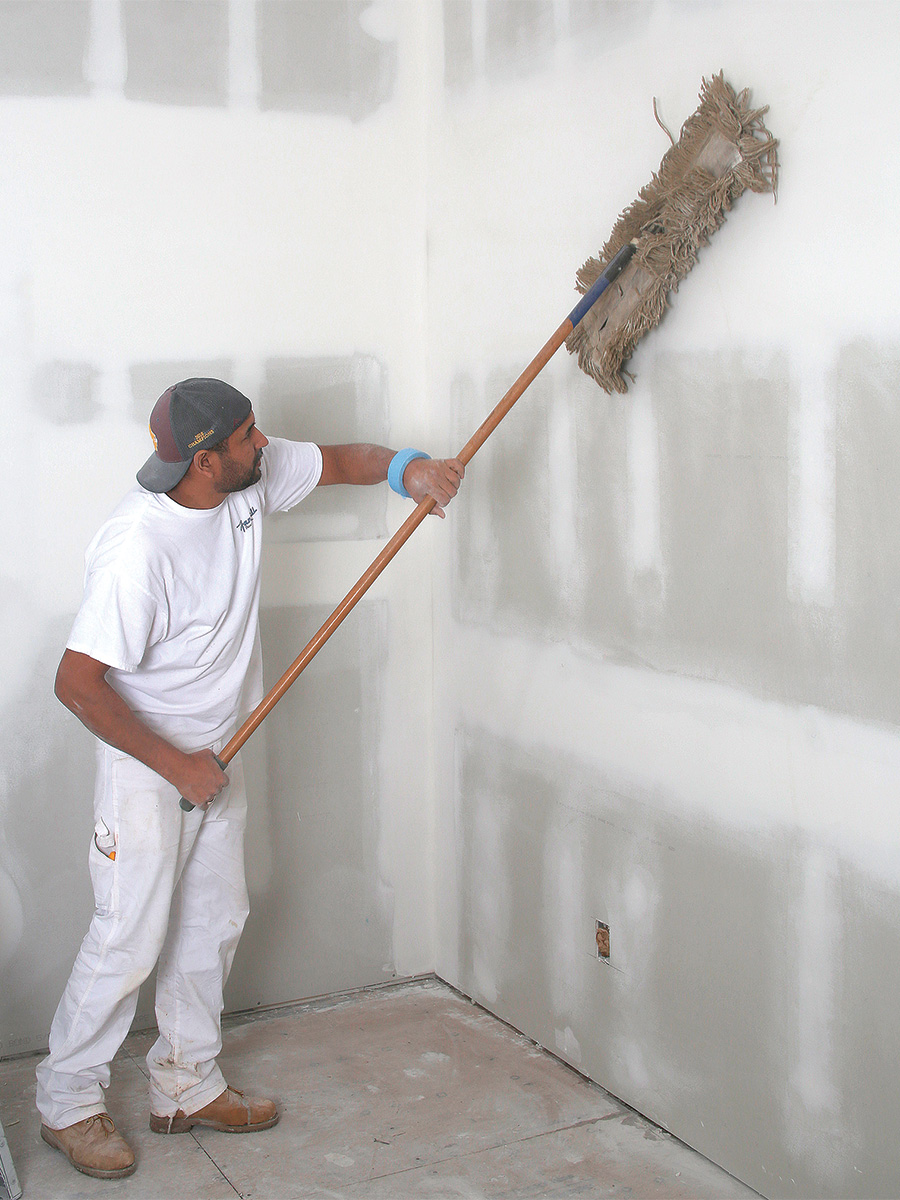
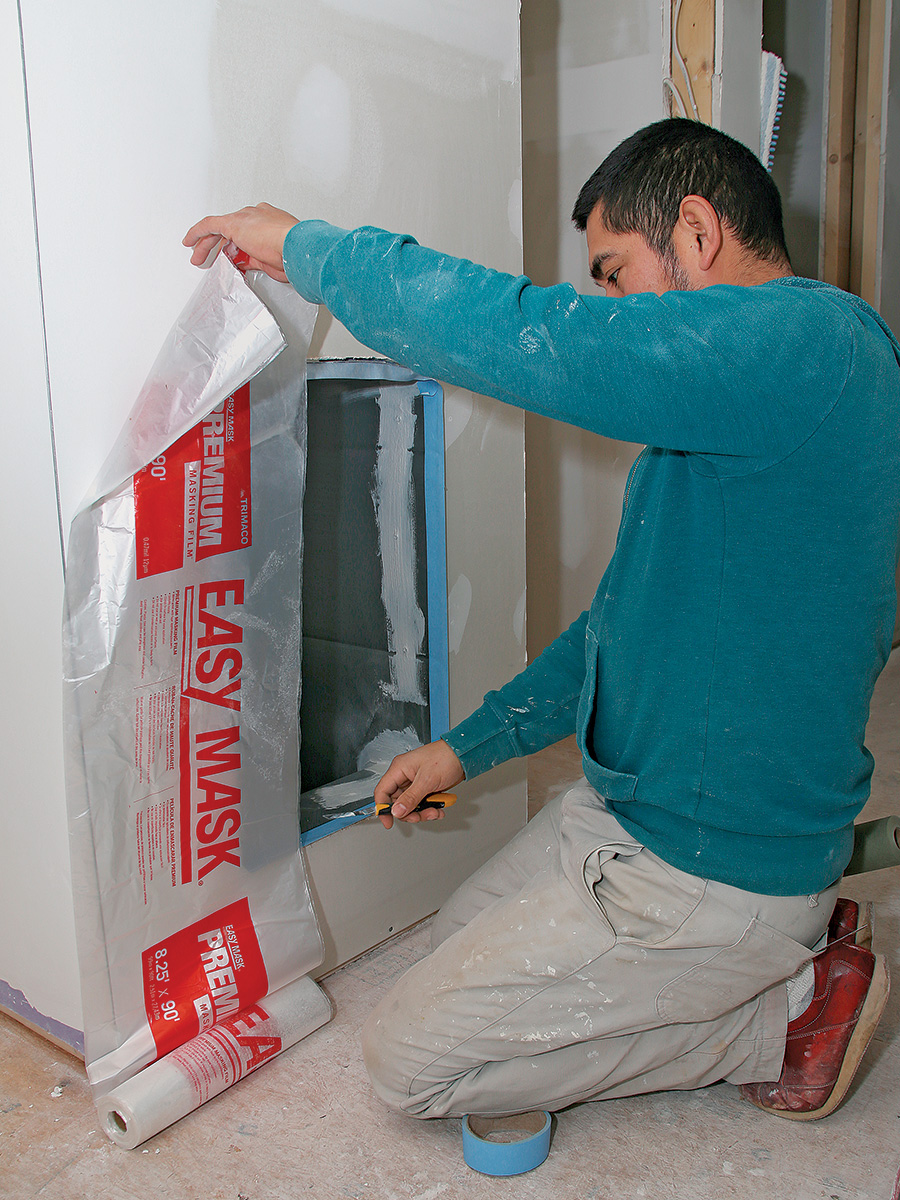
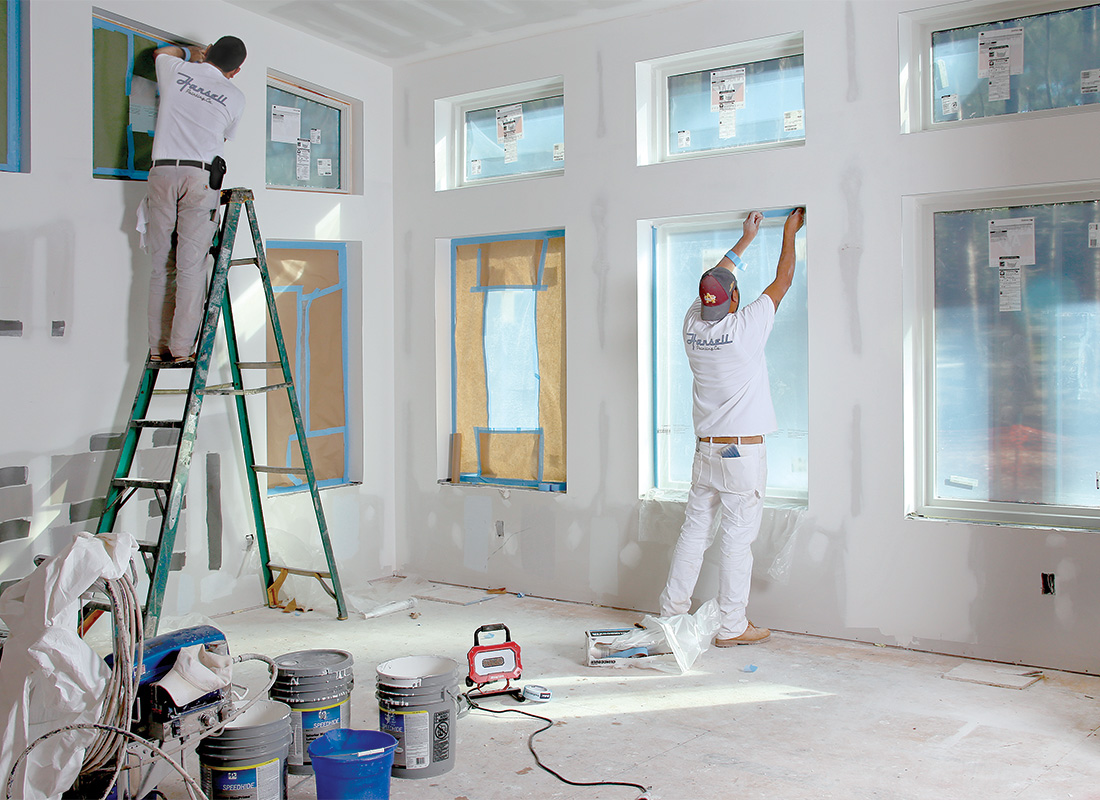

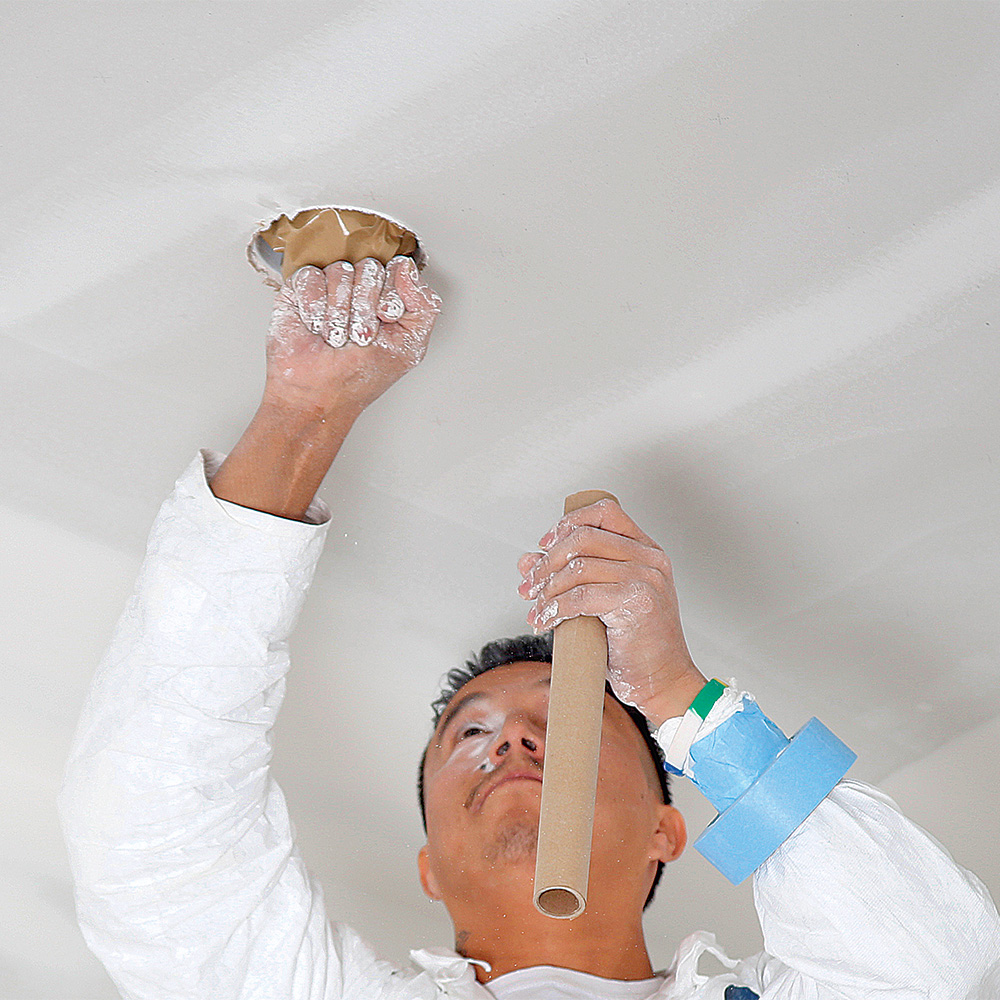





View Comments
How about using Zinsser Gardz to prime a level 4 finish? I think it’s a bit more expensive but it really seals eveeything uniformly.